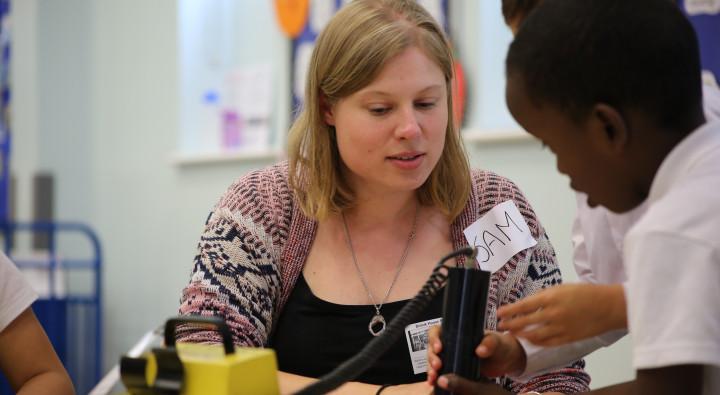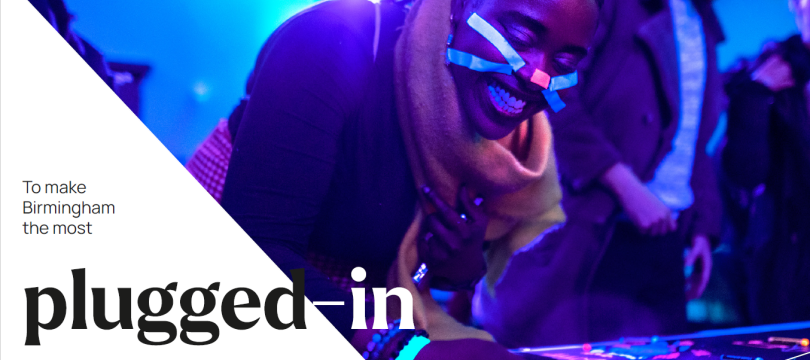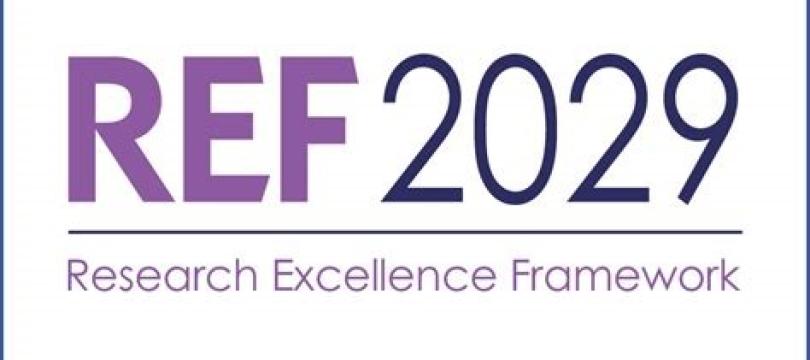Award-winning researcher’s public engagement inspiration
The NCCPE’s Steph Todd interviews Dr Samantha Terry, Lecturer at King’s College London, to find out about her experiences as a researcher doing public engagement and how she won the Royal Society of Biology’s Outreach and Engagement Award.

Dr Samantha Terry, Sam, is a Lecturer at King’s College London (KCL). She does research and teaching at both undergraduate and postgraduate level. As a radiobiologist, she is interested in understanding how cells, both diseased and healthy, respond when they have been hit with radiation. Her biggest public engagement project so far has been leading a stand at the Royal Society Summer Science Exhibition in 2018.
What first sparked your interest in public engagement? Can you tell us about your first engagement experience?
Originally, I won a Biochemical Society competition to attend The Voice of the Future, hosted by the now Royal Society of Biology, at the Houses of Parliament. I had the opportunity to ask the Science and Technology Select Committee a pressing question on how they thought the UK might better keep UK-trained scientists in the UK. Although not technically ‘public engagement’, the Voice of the Future did show me we could influence the world of science even when stepping outside of the lab. With this in mind, when I started as a postdoc at KCL, I was supported by our new public engagement manager to take part in engagement activities. My first experience was taking part in I’m a Scientist, Get me out of here! where secondary school children can ask any question about science or scientific careers. Despite thinking I was doing quite well, I was the first to be booted out of the competition… Sad times!
We would love to hear about how you developed your engagement activity from conception to delivery. In your experience what are the ‘magic ingredients’ for a successful engagement activity?
My biggest project to date has been the Royal Society Summer Science Exhibition Hot Stuff stand in July 2018 for which I was lead exhibitor. We ended up having over 6,000 people at the stand over the week. What helped us pull off the whole event were very clear key messages we wanted to get across, namely 1. Radioactivity is all around; 2. Radioactivity can image disease; and 3. Radioactivity treats disease.
The best piece of advice I was given was to make it interactive and fun – this we certainly managed to do, with brightly-coloured plush organs in which a radioactive rock was hidden. When planning the stand, we consulted with chemists, biologists, physicists, engineers, clinicians and hospital workshop staff. Most interestingly I approached two separate patient and public involvement groups at the Biomedical Research Centre and KCL. We created our activities early, so we could test their success with target groups in advance. So in terms of magic ingredients: fun and enthusiasm are foremost, but also lots of time and input from various sources is needed.
Congratulations on winning one of two Royal Society of Biology Outreach and Engagement 2018 awards! It would be great to find out more about the prize, what the judges were looking for and what made you stand out from the crowd.
Thank you very much. I am very excited about this. The Prize I won was specifically for Established Researchers and their efforts in public engagement and outreach. I believe the reason I won the award is because my leadership has transformed my School’s attitude to public engagement, which is en route to becoming accepted as a natural part of academic life, with due consideration in appraisal and career development and promotion. I however took a risk to my career to divert a fair amount of focus away from my research towards public engagement and outreach at a time when these activities weren’t something that was officially recognised. KCL has paid lip-service to promoting public engagement for some time and I hoped that an official award such as the RSB Award would serve as a reminder of the value of engagement and outreach.
The NCCPE champion the creation of a culture within higher education where public engagement is embedded, valued and recognised. How has your institution supported you in your public engagement journey?
I have great support within my immediate Department and School environment, most especially from our Head of Department, Professor Philip Blower. I have also been lucky to have had the support of two public engagement managers, Alice Taylor-Gee (Centre of Medical Engineering) and Matthew Allinson (School of Biomedical Engineering and Imaging Sciences), both of whom were indispensable when preparing for the Royal Society Summer Science Exhibition. Within our School, both public engagement managers, and myself, have been influential in improving the culture and increasing the activity around engagement. Within days of a general call for volunteers for our Hot Stuff stand, we had filled our 50 volunteer spaces. However, at KCL there is currently no incentive for academics and therefore their groups, to carry out public engagement to a level where it will create impact. We hope the RSB Award will spur KCL to create an official promotion or pay-rise incentive to encourage all academics to take part.
Now you have won the Outreach and Engagement Award from the Royal Society of Biology and received such great recognition for your work, what’s next?
I aim to ensure that our excellent public engagement and PPI activities continue and that we use our newly inspired and trained team of public engagement researchers to expand our current repertoire of activities. However, my biggest aim is to expand the type of activities and go beyond the traditional ‘inspiring’ form of activities (public lectures, soapbox science, pint of science) and focus more on activities that allow two-way conversations. I hope to create and implement a strategy to target currently untapped audiences (i.e. people who do not normally go to scientific events) and to increase our impact on patient experiences by creating engagement events with and for them.

